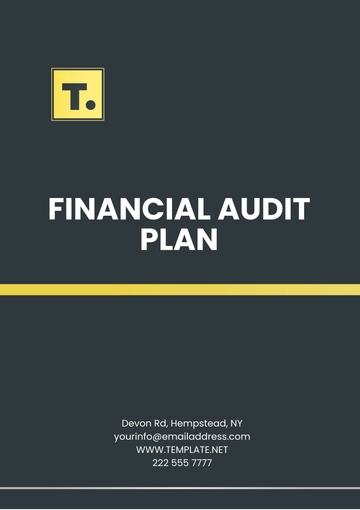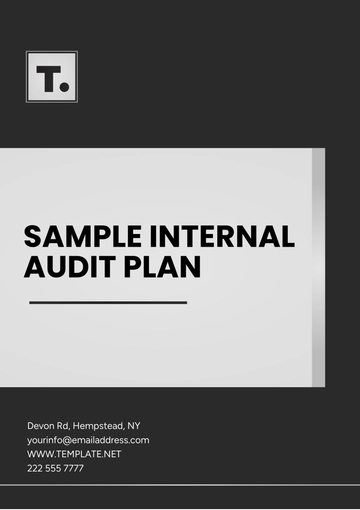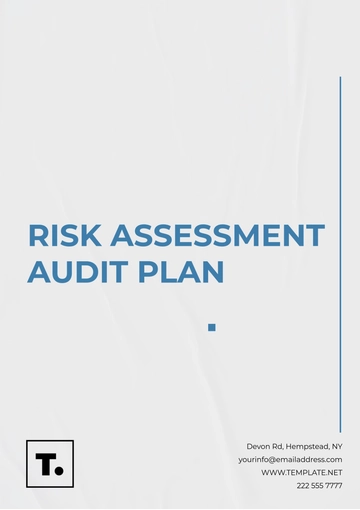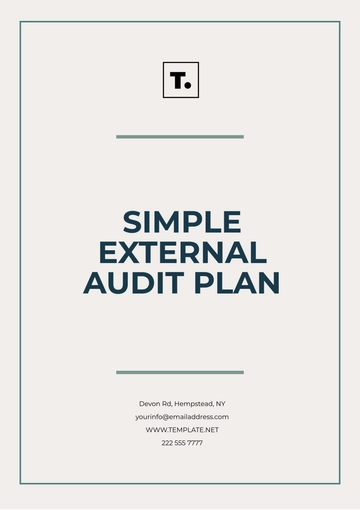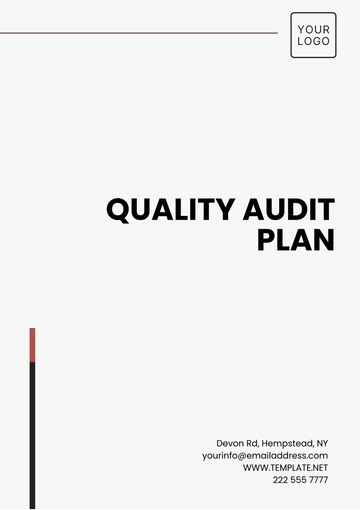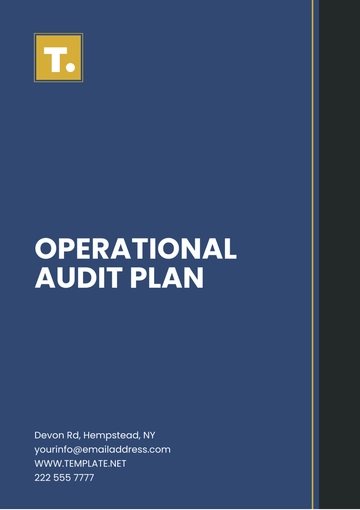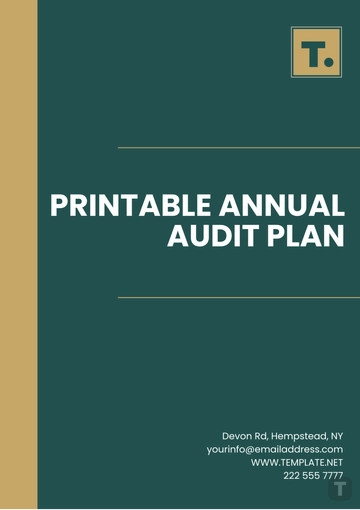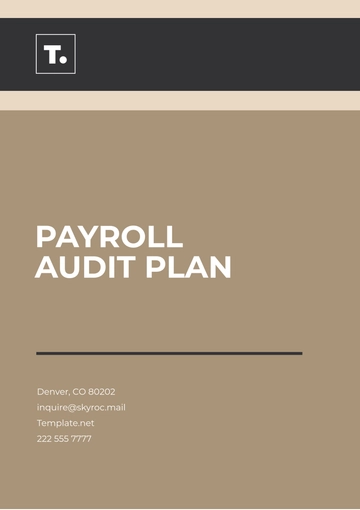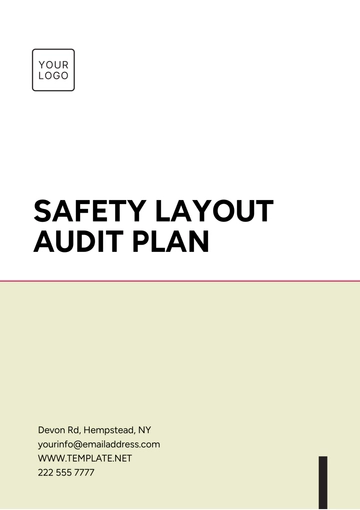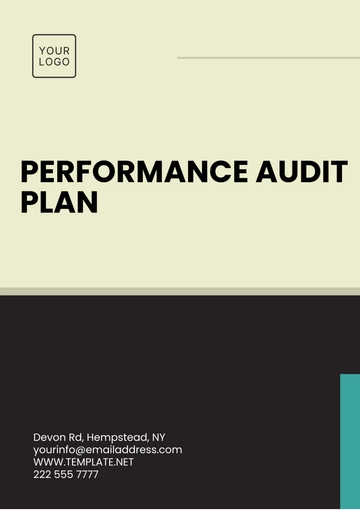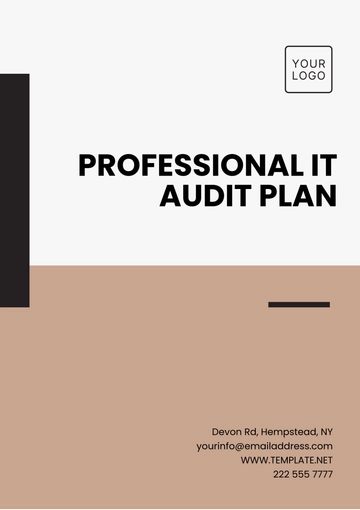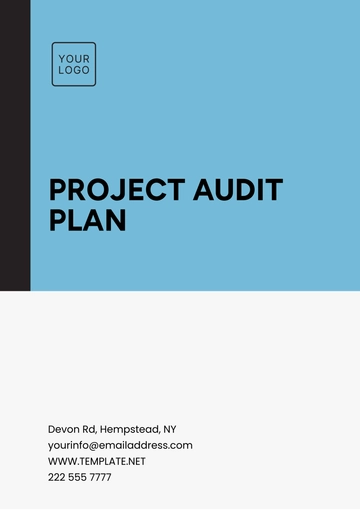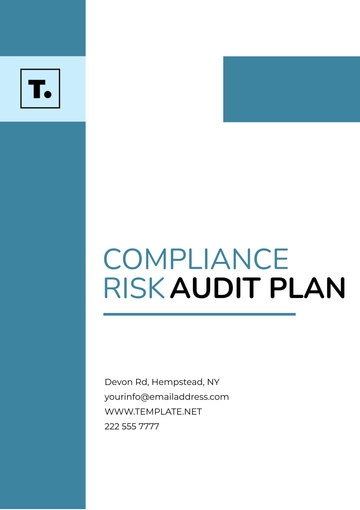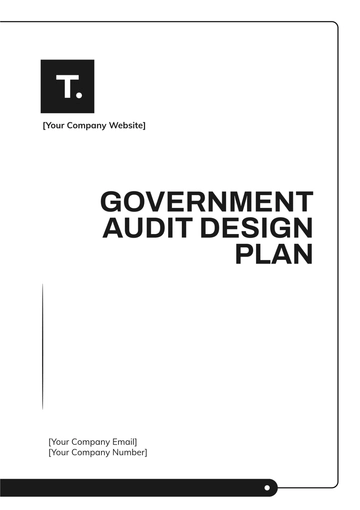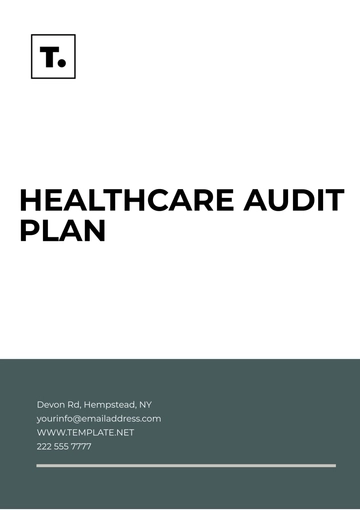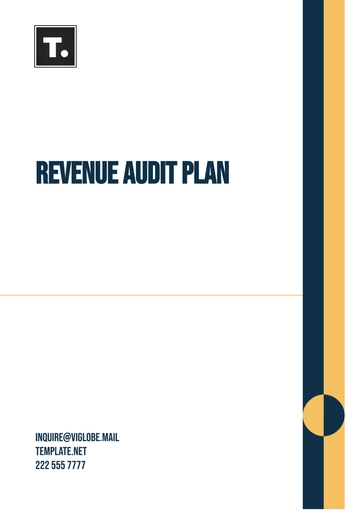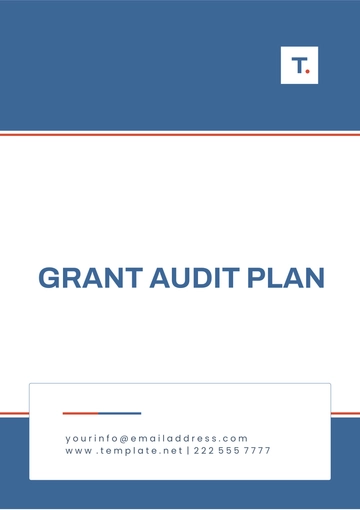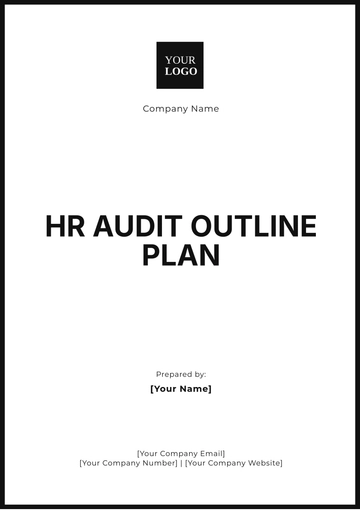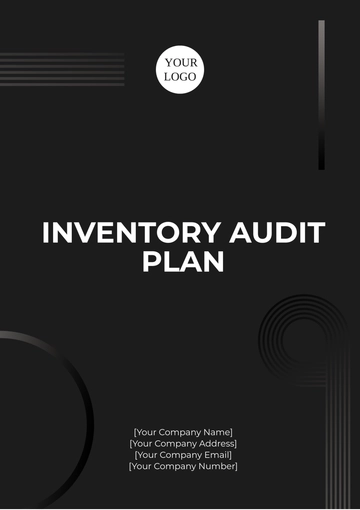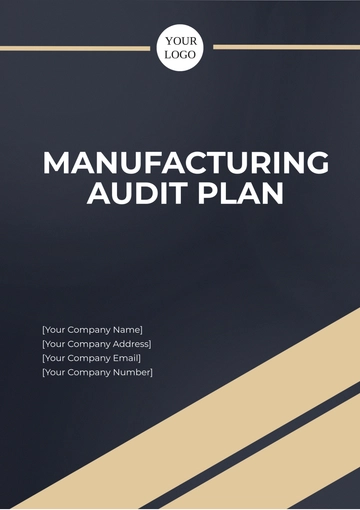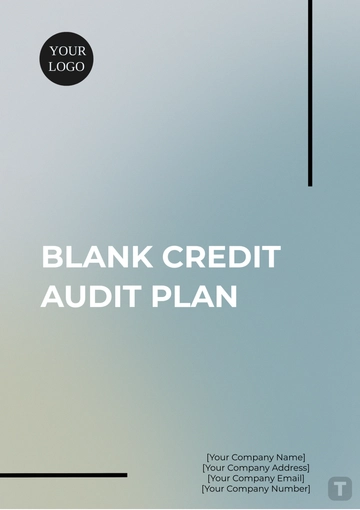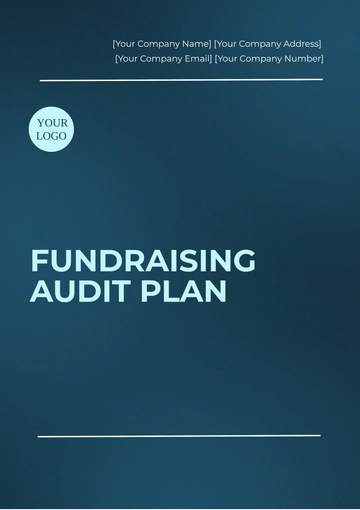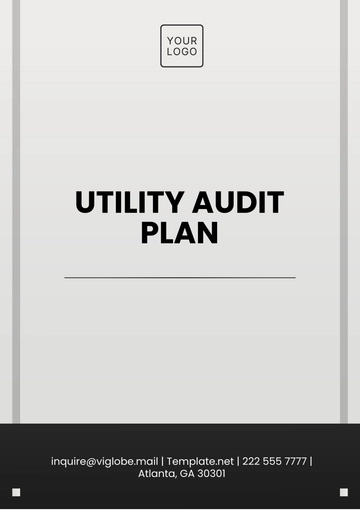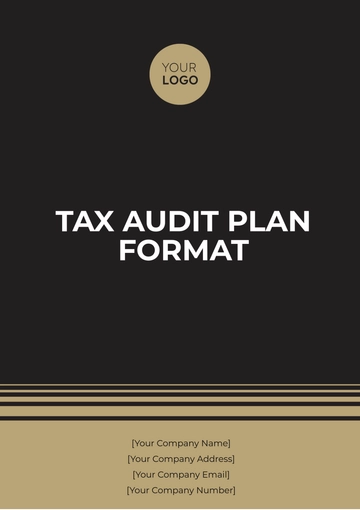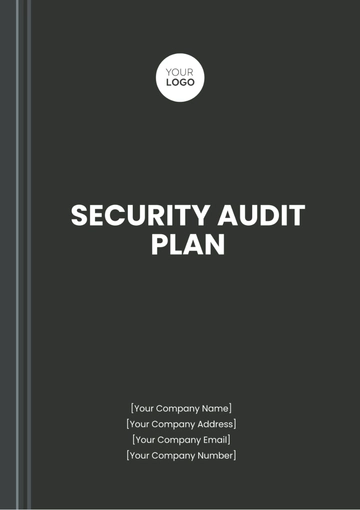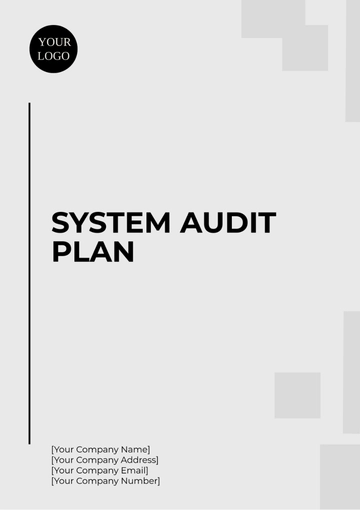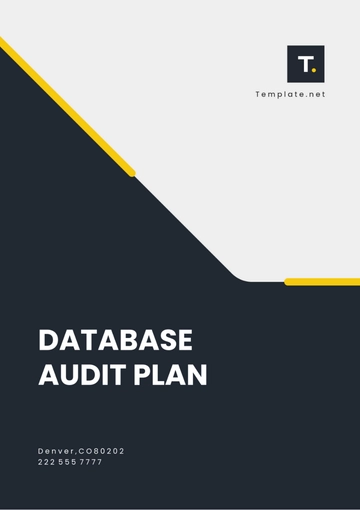Free Nursing Home Audit Plan
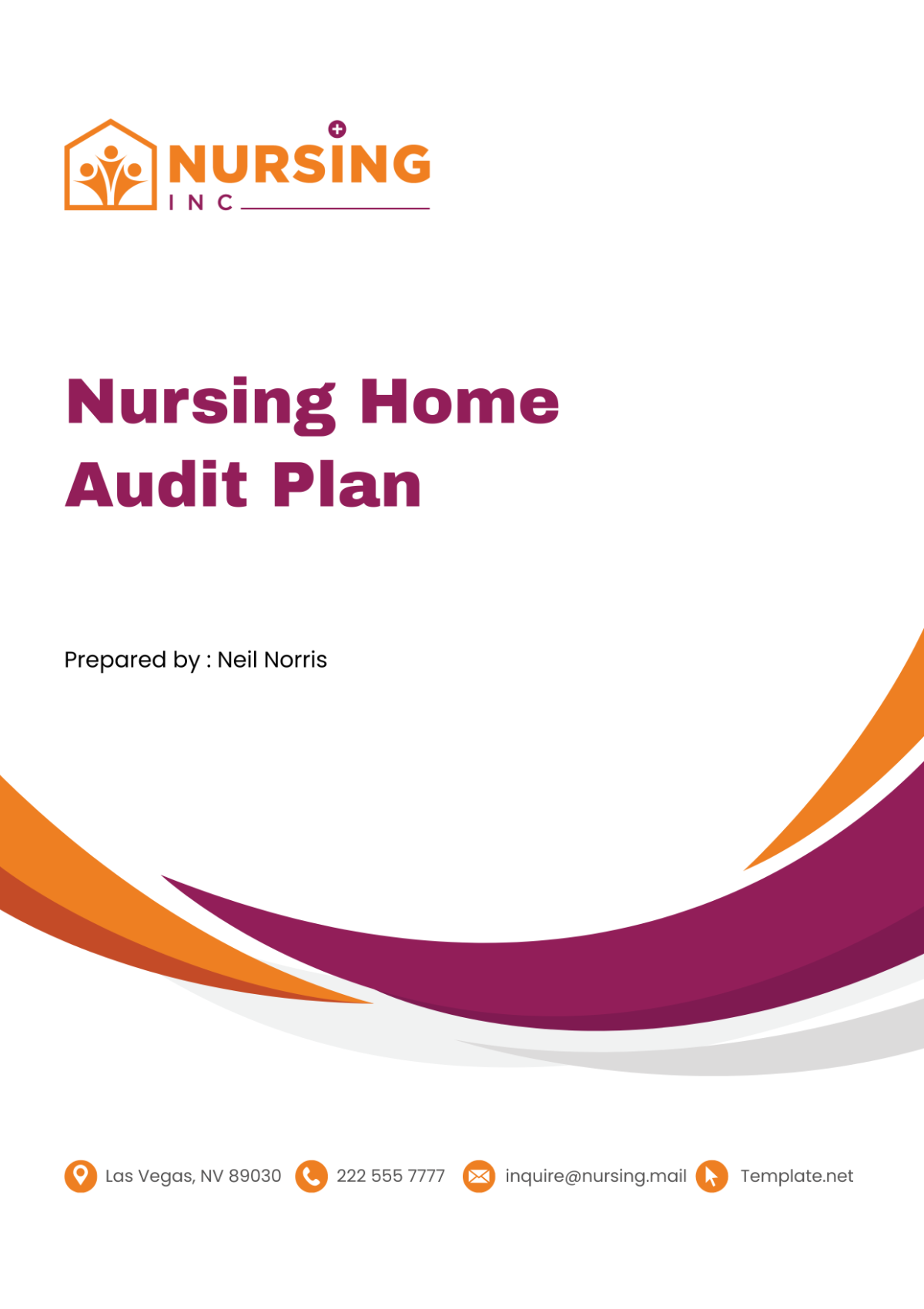
1. Introduction
Objective of the Audit
The primary objectives of this audit are to evaluate the compliance of [Your Company Name]'s nursing home operations with healthcare standards, safety protocols, quality of resident care, resident satisfaction, and financial management. The audit aims to identify strengths, weaknesses, and areas for improvement, ensuring that the facility meets or exceeds all regulatory requirements and industry best practices.
Scope
This audit will encompass an extensive review of:
Patient care and safety protocols
Medication management processes
Compliance with federal, state, and local healthcare regulations
Financial operations and billing practices
Facility maintenance and safety measures
Staff training, development, and competency
Resident satisfaction levels
Audit Period
The audit will cover operations and records from [Month, Day, Year], to [Month, Day, Year].
2. Audit Team Composition
Role | Responsibilities |
|---|---|
Lead Auditor | Overall audit management, report finalization |
Clinical Auditor | Review of patient care, medication management, and staff competencies |
Financial Auditor | Examination of financial operations, billing practices, and regulatory compliance in financial reporting |
Facility Safety Expert | Assessment of facility maintenance, safety protocols, and emergency preparedness |
3. Audit Areas
Patient Care and Safety
The audit will assess the implementation of individualized care plans, ensuring they meet the specific needs of each resident. This includes reviewing the frequency of plan evaluations and updates, staff compliance with care instructions, and the effectiveness of interventions. The staff-to-resident ratios will be analyzed for compliance with industry standards, especially during critical periods such as nights and weekends. Incident reporting mechanisms will be scrutinized for timeliness, accuracy, and follow-up actions. Emergency preparedness will be evaluated by examining drill records, emergency plan documentation, and staff training on emergency procedures.
Medication Management
This section will examine the entire medication management process, from prescribing to administration, with a particular focus on high-risk medications. The audit will review protocols for medication reconciliation, adherence to prescribing guidelines, the accuracy of medication administration records, and the security of medication storage areas. The handling of controlled substances will receive special attention to ensure compliance with federal and state regulations.
Regulatory Compliance
The audit will cover a broad spectrum of regulatory compliance areas, including but not limited to resident rights, privacy protections under HIPAA, compliance with the Americans with Disabilities Act (ADA), adherence to Occupational Safety and Health Administration (OSHA) standards for worker safety, and labor law compliance including fair work hours and compensation. The audit will also assess the facility’s compliance with the Centers for Medicare & Medicaid Services (CMS) standards.
Financial Operations
An in-depth analysis will be conducted on billing processes to detect any inaccuracies or instances of non-compliance with payer requirements. The audit will review internal controls over financial reporting, assess the adequacy of the budgeting process, and evaluate the management of resident funds. Additionally, the audit will look into the procurement processes and contracts to ensure they are conducted ethically and in accordance with policy.
Facility Maintenance and Safety
This audit area will include an examination of the life safety code compliance, including fire safety measures, the adequacy of exit strategies, and the condition and accessibility of emergency equipment. The audit will also review the regularity and documentation of maintenance activities, inspect for cleanliness and hygiene standards throughout the facility, and evaluate the implementation of safety protocols to prevent falls and other accidents.
Staff Training and Development
The audit will assess the comprehensiveness of orientation programs for new hires, ongoing education and training for all staff members, and the process for evaluating staff performance and competency. Special attention will be given to training regarding resident care ethics, privacy laws, and emergency response.
Resident Satisfaction
A thorough analysis will be conducted using a combination of surveys, focus groups, and one-on-one interviews with residents and their families. This will assess overall satisfaction with the quality of care, communication with staff, responsiveness to concerns, and the living environment. Feedback mechanisms for residents and their families will also be reviewed for effectiveness and responsiveness.
4. Audit Methodology
Document Review
Review a wide range of documents, including but not limited to:
Medical records and care plans
Staff training and certification records
Financial records and billing documentation
Policy and procedure manuals
Maintenance and safety inspection logs
Interviews
Conduct structured interviews with a representative sample of staff, residents, and family members to gain insights into their perspectives on the quality of care and operations of the facility.
Observations
In order to gain a comprehensive understanding of the facility and its operations, it is recommended to conduct periodic walkthroughs. By doing this, you can observe the daily activities that are carried out, the nature of interactions between staff and residents, and the overall environment at different times and under different conditions. This will allow you to get a real-time, first-hand view of the day-to-day operations and interactions that paint a true picture of life at the facility, while also giving you the opportunity to take a step back and evaluate the overall environment.
Data Analysis
There is a need to employ both quantitative and qualitative analysis methodologies. These methodologies will be instrumental in examining the data, which is gathered from various sources, including reviews of documents, interviews from involved parties, and extemporaneous observations. These approaches should be used systematically in order to ensure an integral assessment of the collected information.
5. Audit Schedule
Phase | Activity | Start Date | End Date |
|---|---|---|---|
Planning | Finalize audit team and prepare tools | ||
Execution | Document review, interviews, observations | ||
Reporting | Draft and finalize audit report | ||
Follow-Up | Implement recommendations |
6. Reporting
Report Format
The final audit report will be structured as follows:
Executive Summary: A concise overview highlighting the most critical findings and recommendations for quick executive consumption.
Introduction: Brief background on the audit's scope, objectives, and methodology.
Detailed Findings and Recommendations: Organized by audit area, this section will provide an in-depth analysis of findings, supported by data and examples. Recommendations will be tailored to each finding, with a focus on actionable steps for improvement.
Best Practices Highlight: This will include observations of exemplary practices within the facility that could be leveraged or expanded upon.
Action Plan Template: A framework for [Your Company Name] to develop specific action plans for addressing each recommendation.
Appendices: Detailed data tables, a summary of interviews and observations, copies of audit tools and forms used, and a reference list of regulatory standards
Distribution
The final report distribution strategy will ensure all stakeholders are informed and can participate in the improvement process. In addition to the previously mentioned recipients, copies will be made available to department heads and the quality improvement committee.
7. Follow-Up
Action Plan
Following the audit, a detailed action plan will be developed collaboratively with department heads and management. This plan will outline specific steps to address each audit recommendation, assign responsibility to specific individuals or departments, and set realistic deadlines for completion. Priority will be given to findings that pose immediate risks to resident safety or regulatory compliance.
Monitoring and Evaluation
A robust monitoring and evaluation framework will be established to ensure the effective implementation of recommendations. This will include quarterly progress reviews, with interim updates for critical actions. Key performance indicators (KPIs) will be defined for each area of improvement, allowing for quantitative measurement of progress. Additionally, a follow-up audit will be scheduled within 12 months to assess the implementation of recommendations and their impact on operations and resident care quality.
8. Closing Remarks and Key Takeaways
As we conclude the Nursing Home Audit Plan for [Your Company Name], it's important to reflect on the fundamental objectives and anticipated outcomes of this comprehensive review. This plan is not merely an exercise in regulatory compliance; it represents a deep and genuine commitment to enhancing the quality of care and life for the residents who depend on us. The structured approach outlined through this plan ensures a methodical and thorough examination of critical areas within our facility, from patient care and safety to financial operations and staff training.
Key Takeaways
Continuous Improvement: The audit is a stepping stone towards continual improvement, ensuring that our practices not only meet but exceed the industry standards for quality and safety. The action plans derived from the audit findings are designed to address immediate needs and set the stage for ongoing enhancement of care and services.
Accountability and Transparency: By assigning clear responsibilities and timelines, the plan promotes accountability among all levels of staff. Transparency in the process and findings will foster trust among residents, families, and the broader community, reinforcing our commitment to excellence and integrity.
Engagement and Collaboration: The successful implementation of this audit plan requires the engagement and collaboration of everyone in the facility. From leadership to frontline staff, everyone has a role in fostering an environment of care that prioritizes the well-being of our residents.
Monitoring and Evaluation: The establishment of a robust monitoring and evaluation framework is crucial. It will not only assess the effectiveness of the implemented changes but also ensure that the facility remains adaptive and responsive to the evolving needs of its residents and the dynamic landscape of healthcare regulations.
Resident-Centered Care: At the heart of this audit plan is the unwavering focus on resident-centered care. Every recommendation, action plan, and monitoring activity is aimed at enhancing the quality, safety, and satisfaction of care for our residents. This audit underscores our commitment to creating a nurturing and safe environment for those we serve.
In moving forward with the execution of this audit plan, [Your Company Name] is taking a proactive step towards ensuring the highest standards of care and operational excellence. This plan is a clear reflection of our dedication to accountability, continuous improvement, and, most importantly, the health and happiness of our residents.
- 100% Customizable, free editor
- Access 1 Million+ Templates, photo’s & graphics
- Download or share as a template
- Click and replace photos, graphics, text, backgrounds
- Resize, crop, AI write & more
- Access advanced editor
Ensure excellence with Template.net's Nursing Home Audit Plan Template. Crafted for comprehensive evaluation, this template is fully customizable and editable via our Ai Editor Tool. Strategically assess operations, compliance, and care quality, identifying areas for improvement. An essential tool for maintaining the highest standards in nursing home management, exclusively from Template.net.
You may also like
- Finance Plan
- Construction Plan
- Sales Plan
- Development Plan
- Career Plan
- Budget Plan
- HR Plan
- Education Plan
- Transition Plan
- Work Plan
- Training Plan
- Communication Plan
- Operation Plan
- Health And Safety Plan
- Strategy Plan
- Professional Development Plan
- Advertising Plan
- Risk Management Plan
- Restaurant Plan
- School Plan
- Nursing Home Patient Care Plan
- Nursing Care Plan
- Plan Event
- Startup Plan
- Social Media Plan
- Staffing Plan
- Annual Plan
- Content Plan
- Payment Plan
- Implementation Plan
- Hotel Plan
- Workout Plan
- Accounting Plan
- Campaign Plan
- Essay Plan
- 30 60 90 Day Plan
- Research Plan
- Recruitment Plan
- 90 Day Plan
- Quarterly Plan
- Emergency Plan
- 5 Year Plan
- Gym Plan
- Personal Plan
- IT and Software Plan
- Treatment Plan
- Real Estate Plan
- Law Firm Plan
- Healthcare Plan
- Improvement Plan
- Media Plan
- 5 Year Business Plan
- Learning Plan
- Marketing Campaign Plan
- Travel Agency Plan
- Cleaning Services Plan
- Interior Design Plan
- Performance Plan
- PR Plan
- Birth Plan
- Life Plan
- SEO Plan
- Disaster Recovery Plan
- Continuity Plan
- Launch Plan
- Legal Plan
- Behavior Plan
- Performance Improvement Plan
- Salon Plan
- Security Plan
- Security Management Plan
- Employee Development Plan
- Quality Plan
- Service Improvement Plan
- Growth Plan
- Incident Response Plan
- Basketball Plan
- Emergency Action Plan
- Product Launch Plan
- Spa Plan
- Employee Training Plan
- Data Analysis Plan
- Employee Action Plan
- Territory Plan
- Audit Plan
- Classroom Plan
- Activity Plan
- Parenting Plan
- Care Plan
- Project Execution Plan
- Exercise Plan
- Internship Plan
- Software Development Plan
- Continuous Improvement Plan
- Leave Plan
- 90 Day Sales Plan
- Advertising Agency Plan
- Employee Transition Plan
- Smart Action Plan
- Workplace Safety Plan
- Behavior Change Plan
- Contingency Plan
- Continuity of Operations Plan
- Health Plan
- Quality Control Plan
- Self Plan
- Sports Development Plan
- Change Management Plan
- Ecommerce Plan
- Personal Financial Plan
- Process Improvement Plan
- 30-60-90 Day Sales Plan
- Crisis Management Plan
- Engagement Plan
- Execution Plan
- Pandemic Plan
- Quality Assurance Plan
- Service Continuity Plan
- Agile Project Plan
- Fundraising Plan
- Job Transition Plan
- Asset Maintenance Plan
- Maintenance Plan
- Software Test Plan
- Staff Training and Development Plan
- 3 Year Plan
- Brand Activation Plan
- Release Plan
- Resource Plan
- Risk Mitigation Plan
- Teacher Plan
- 30 60 90 Day Plan for New Manager
- Food Safety Plan
- Food Truck Plan
- Hiring Plan
- Quality Management Plan
- Wellness Plan
- Behavior Intervention Plan
- Bonus Plan
- Investment Plan
- Maternity Leave Plan
- Pandemic Response Plan
- Succession Planning
- Coaching Plan
- Configuration Management Plan
- Remote Work Plan
- Self Care Plan
- Teaching Plan
- 100-Day Plan
- HACCP Plan
- Student Plan
- Sustainability Plan
- 30 60 90 Day Plan for Interview
- Access Plan
- Site Specific Safety Plan

